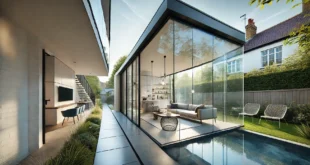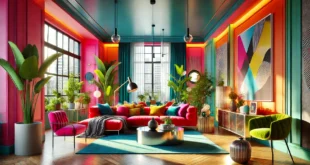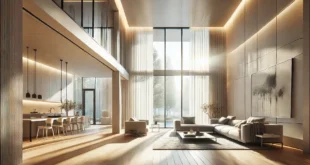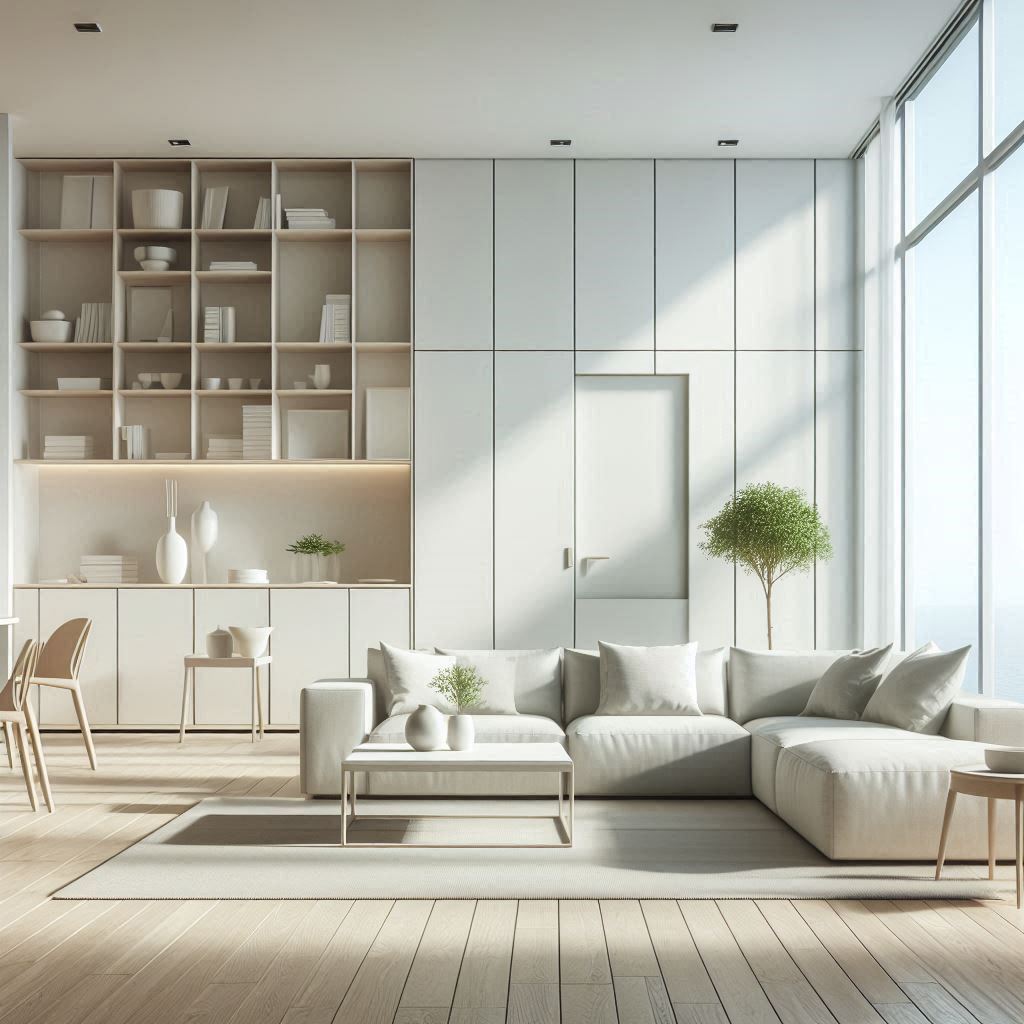 Welcome to the world of minimalist home design, where simplicity, functionality, and elegance converge to create spaces that feel open, serene, and beautifully refined. Whether you’re redesigning your entire home or just looking for ideas to declutter and refresh a single room, minimalist design offers a timeless approach that emphasizes quality over quantity. It’s about making thoughtful choices, embracing a less-is-more philosophy, and creating an environment that fosters clarity and calm. As professional home designers, we’re here to guide you through the principles and advantages of minimalist home design.
Welcome to the world of minimalist home design, where simplicity, functionality, and elegance converge to create spaces that feel open, serene, and beautifully refined. Whether you’re redesigning your entire home or just looking for ideas to declutter and refresh a single room, minimalist design offers a timeless approach that emphasizes quality over quantity. It’s about making thoughtful choices, embracing a less-is-more philosophy, and creating an environment that fosters clarity and calm. As professional home designers, we’re here to guide you through the principles and advantages of minimalist home design.
In today’s fast-paced world, homes have become sanctuaries—places where we can retreat from the chaos of daily life and find peace. Minimalist design aligns perfectly with this need, providing spaces that are free of clutter and distraction, focusing instead on clean lines, natural materials, and a neutral color palette. This design philosophy is not just about aesthetics; it’s about creating a lifestyle that encourages mindfulness and simplicity. In this article, we’ll explore the key elements of minimalist home design, providing you with the knowledge and inspiration to create a space that feels both functional and elegant.
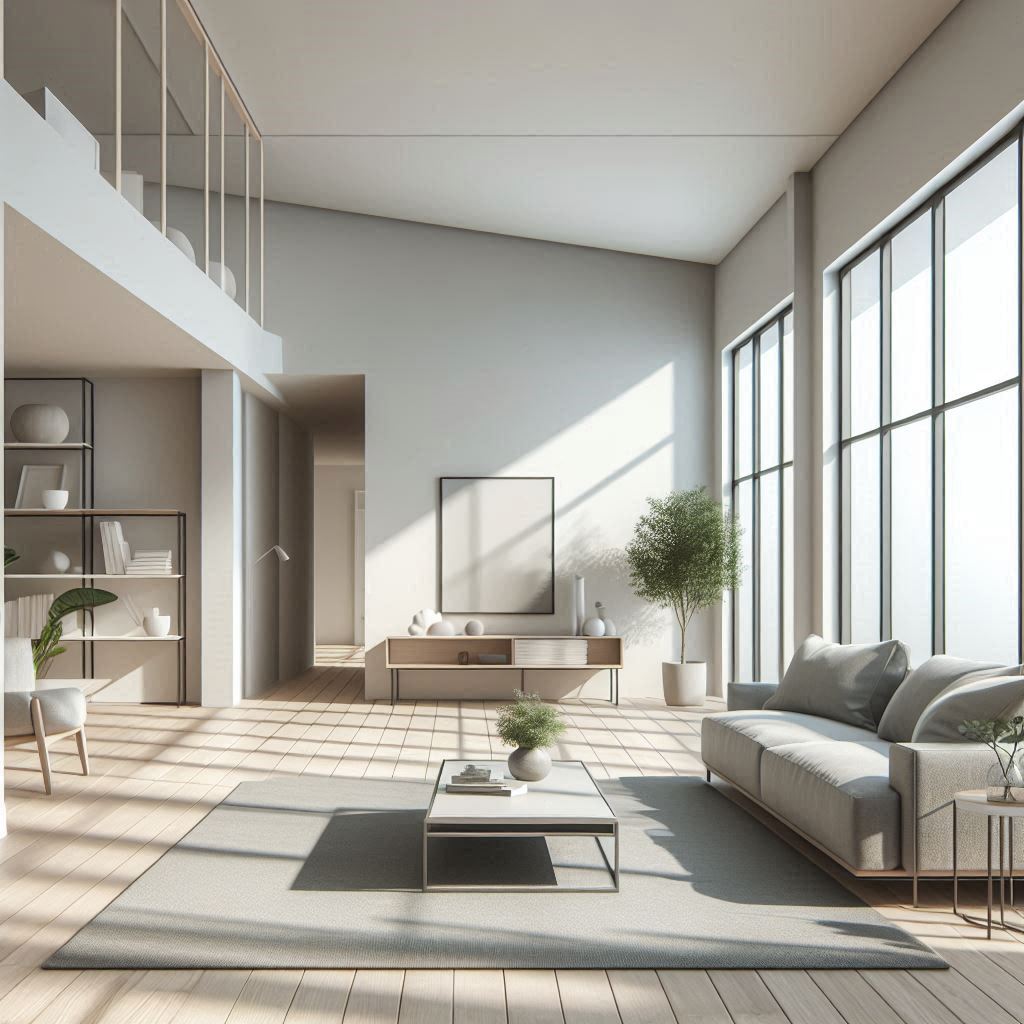 Whether you’re drawn to the sleek, modern aesthetic of minimalism or are simply looking for ways to reduce visual clutter and improve the functionality of your home, this guide will help you every step of the way. From selecting furniture to choosing color schemes and materials, we’ll cover everything you need to know about creating a minimalist home that reflects your personal style while enhancing the overall flow and comfort of your space. Join us as we explore the world of minimalist home design and discover how it can transform your living environment.
Whether you’re drawn to the sleek, modern aesthetic of minimalism or are simply looking for ways to reduce visual clutter and improve the functionality of your home, this guide will help you every step of the way. From selecting furniture to choosing color schemes and materials, we’ll cover everything you need to know about creating a minimalist home that reflects your personal style while enhancing the overall flow and comfort of your space. Join us as we explore the world of minimalist home design and discover how it can transform your living environment.
Introduction to Minimalist Home Design
The Essence of Minimalism
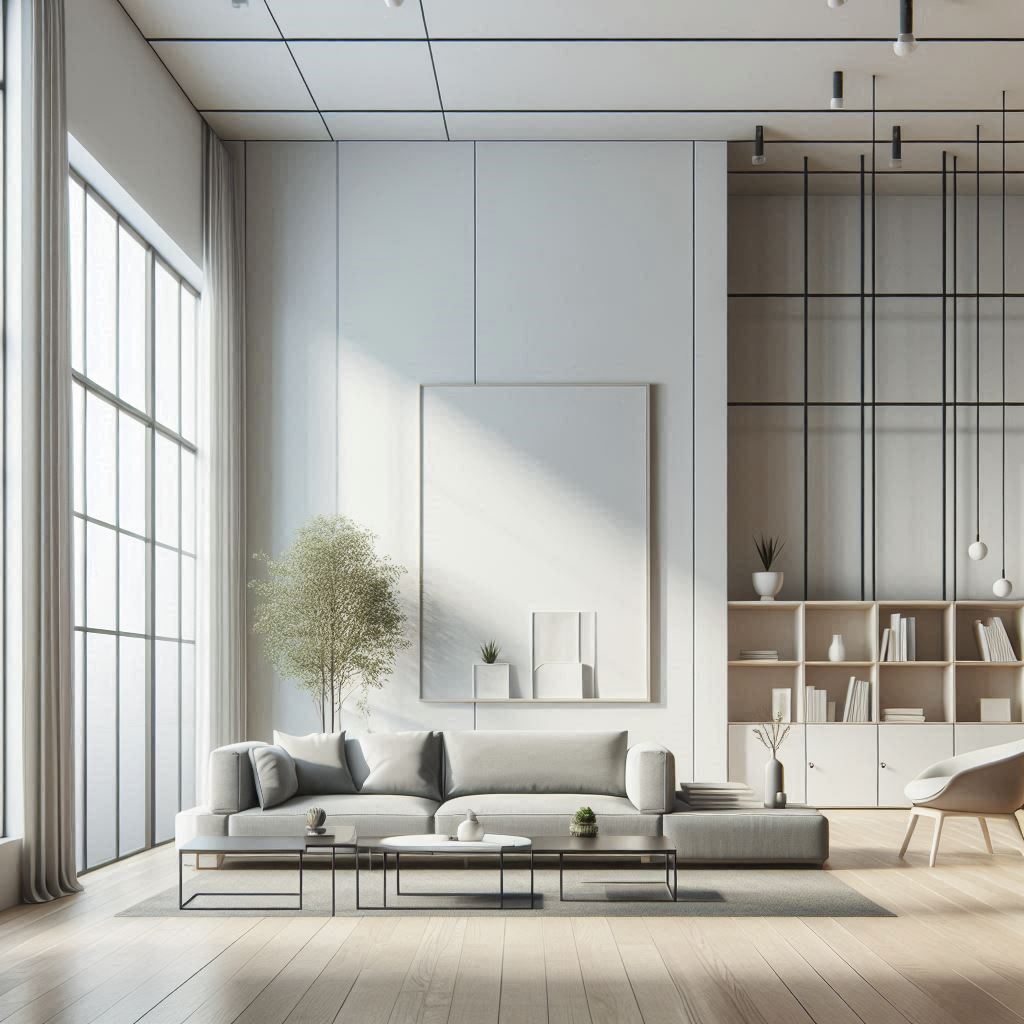 Minimalist home design is rooted in the idea of “less is more.” At its core, this design philosophy emphasizes simplicity, functionality, and intentionality. In a minimalist home, every item has a purpose, and there is no excess. This approach allows for a clean, uncluttered space that promotes calm and relaxation. The minimalist style often features a neutral color palette, open floor plans, and natural materials, creating a sense of harmony and balance. By focusing on essential elements and eliminating unnecessary distractions, minimalist design encourages a more thoughtful way of living.
Minimalist home design is rooted in the idea of “less is more.” At its core, this design philosophy emphasizes simplicity, functionality, and intentionality. In a minimalist home, every item has a purpose, and there is no excess. This approach allows for a clean, uncluttered space that promotes calm and relaxation. The minimalist style often features a neutral color palette, open floor plans, and natural materials, creating a sense of harmony and balance. By focusing on essential elements and eliminating unnecessary distractions, minimalist design encourages a more thoughtful way of living.
The Origins of Minimalist Design
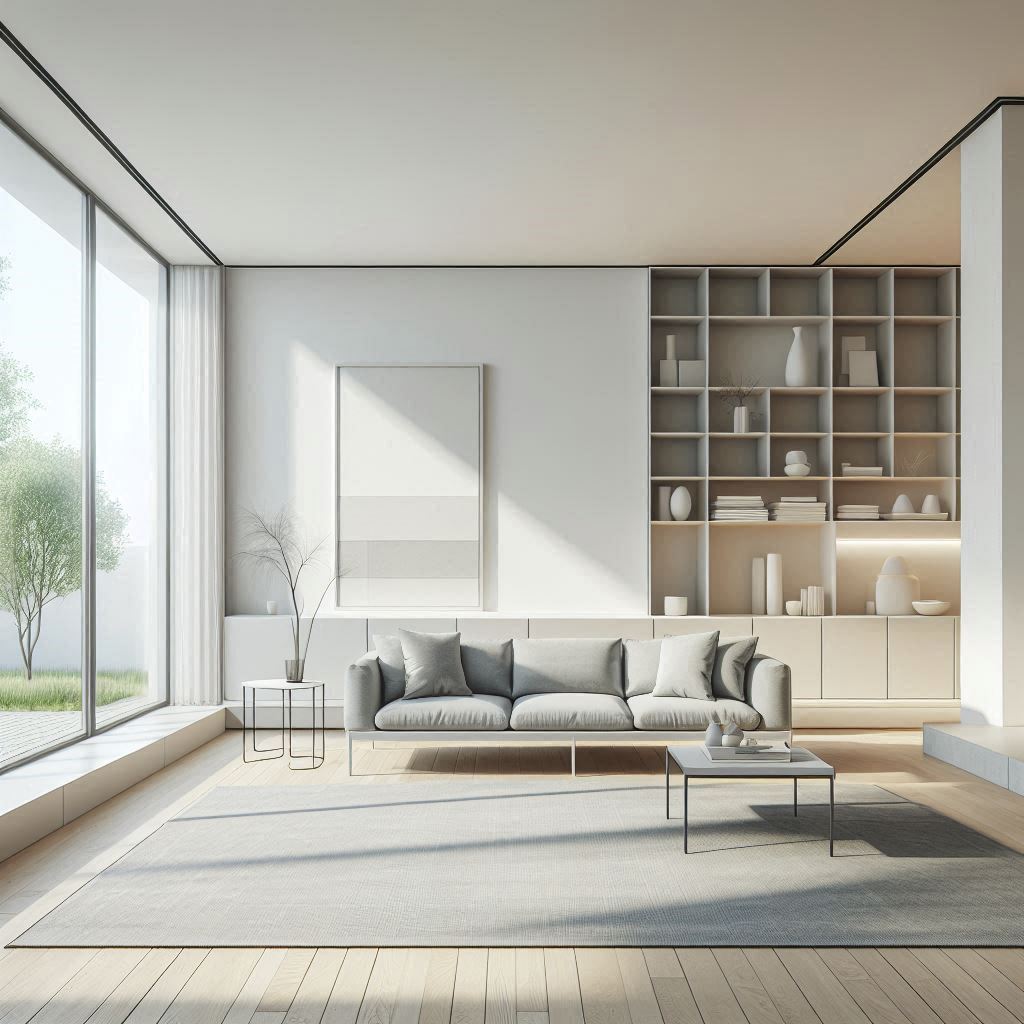 Minimalist design has its origins in the post-World War II era, particularly influenced by modernist architecture and Japanese design principles. The minimalist movement sought to reject the ornate and overly decorative styles that had previously dominated interior design. Instead, it focused on simplicity, form, and function. Architects like Ludwig Mies van der Rohe and designers such as Dieter Rams championed the idea that good design should be simple, functional, and long-lasting. Today, minimalist home design continues to be a popular choice for those who value clarity, order, and efficiency in their living spaces.
Minimalist design has its origins in the post-World War II era, particularly influenced by modernist architecture and Japanese design principles. The minimalist movement sought to reject the ornate and overly decorative styles that had previously dominated interior design. Instead, it focused on simplicity, form, and function. Architects like Ludwig Mies van der Rohe and designers such as Dieter Rams championed the idea that good design should be simple, functional, and long-lasting. Today, minimalist home design continues to be a popular choice for those who value clarity, order, and efficiency in their living spaces.
The Key Elements of Minimalist Design
The key elements of minimalist home design include a neutral color palette, clean lines, and open spaces. Minimalism embraces simplicity in every aspect, from the layout of the rooms to the selection of furniture and decor. Light and space are prioritized, with large windows often used to bring in natural light and create a sense of openness. Furniture tends to be sleek and functional, without unnecessary embellishments. Additionally, storage solutions are often integrated into the design, helping to maintain a clutter-free environment. By eliminating excess, minimalist design allows the beauty of each element to shine.
Minimalist Color Schemes
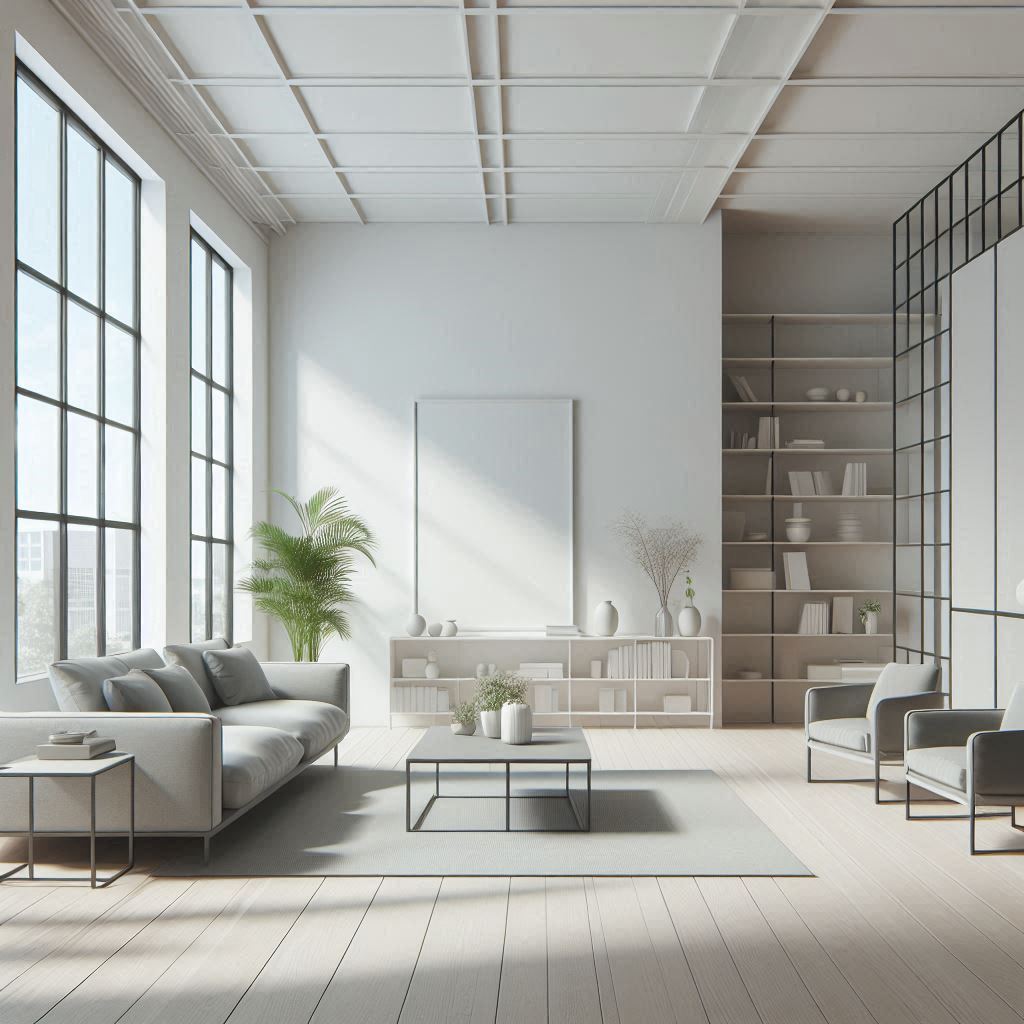 Color plays an essential role in minimalist home design. The palette is typically neutral, with shades of white, gray, beige, and black dominating the space. These colors create a sense of calm and allow the architecture and furnishings to take center stage. In some cases, soft pastels or natural tones such as wood or stone are introduced to add warmth and texture. While bold colors are rarely used, they can be introduced sparingly as accents to provide contrast or highlight specific areas of the home. The goal is to maintain a cohesive and balanced aesthetic that feels serene and uncluttered.
Color plays an essential role in minimalist home design. The palette is typically neutral, with shades of white, gray, beige, and black dominating the space. These colors create a sense of calm and allow the architecture and furnishings to take center stage. In some cases, soft pastels or natural tones such as wood or stone are introduced to add warmth and texture. While bold colors are rarely used, they can be introduced sparingly as accents to provide contrast or highlight specific areas of the home. The goal is to maintain a cohesive and balanced aesthetic that feels serene and uncluttered.
Functional Furniture Choices
Furniture in minimalist home design is carefully chosen for both its form and function. Pieces are often sleek, with clean lines and simple shapes. There is an emphasis on quality over quantity, meaning that each piece of furniture serves a purpose and is thoughtfully integrated into the overall design. Multi-functional furniture, such as storage beds, fold-out tables, or modular sofas, is common in minimalist homes, as it helps to maximize space without adding clutter. Additionally, furniture made from natural materials like wood, metal, and glass is often used to enhance the connection between the indoors and the outdoors.
The Role of Natural Light in Minimalist Homes
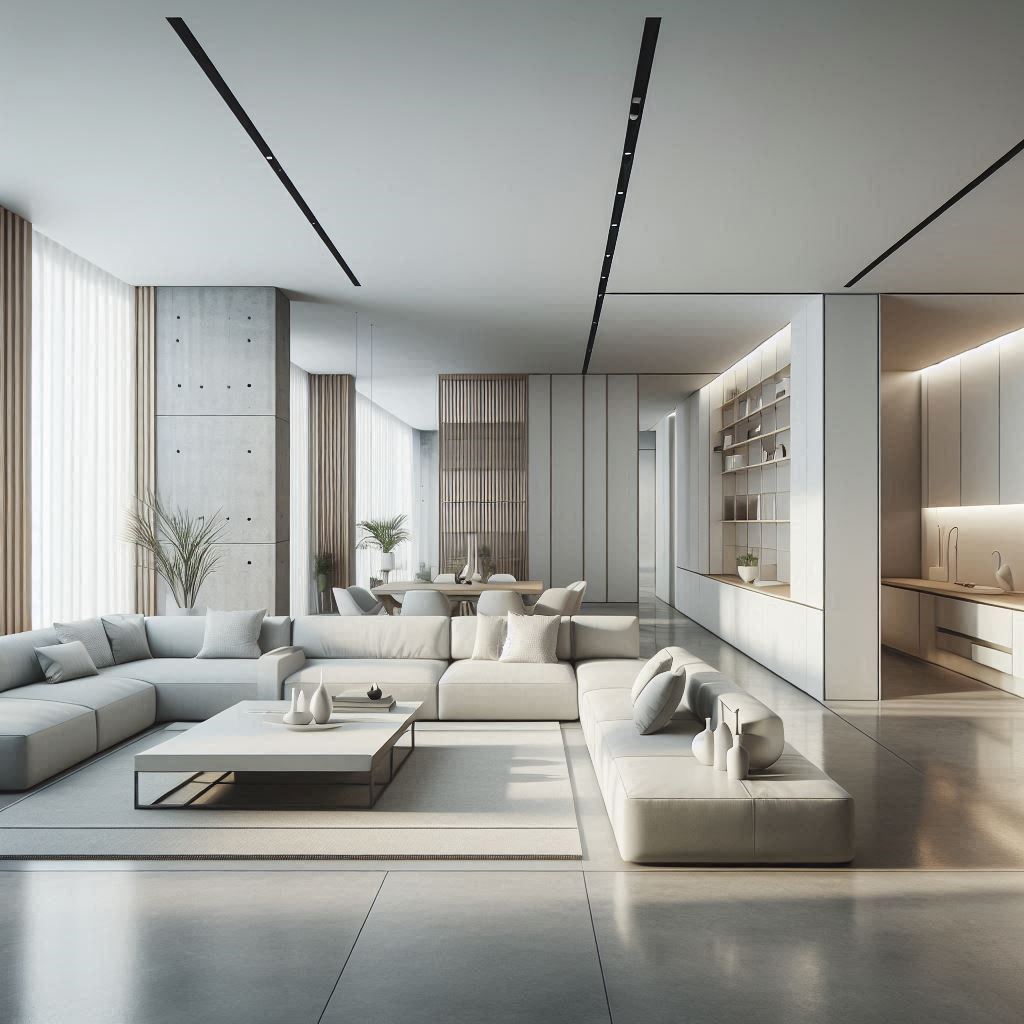 Natural light is a critical component of minimalist home design. Large windows, skylights, and open floor plans allow light to flow freely throughout the space, creating an airy and spacious feel. In minimalist homes, window treatments are often minimal or absent, allowing the architecture and natural surroundings to take center stage. By maximizing the amount of natural light in a room, minimalist design enhances the sense of openness and connection to the outdoors. In spaces where natural light is limited, careful attention is given to artificial lighting, with simple, elegant fixtures providing soft, ambient illumination.
Natural light is a critical component of minimalist home design. Large windows, skylights, and open floor plans allow light to flow freely throughout the space, creating an airy and spacious feel. In minimalist homes, window treatments are often minimal or absent, allowing the architecture and natural surroundings to take center stage. By maximizing the amount of natural light in a room, minimalist design enhances the sense of openness and connection to the outdoors. In spaces where natural light is limited, careful attention is given to artificial lighting, with simple, elegant fixtures providing soft, ambient illumination.
Creating a Sense of Balance and Harmony
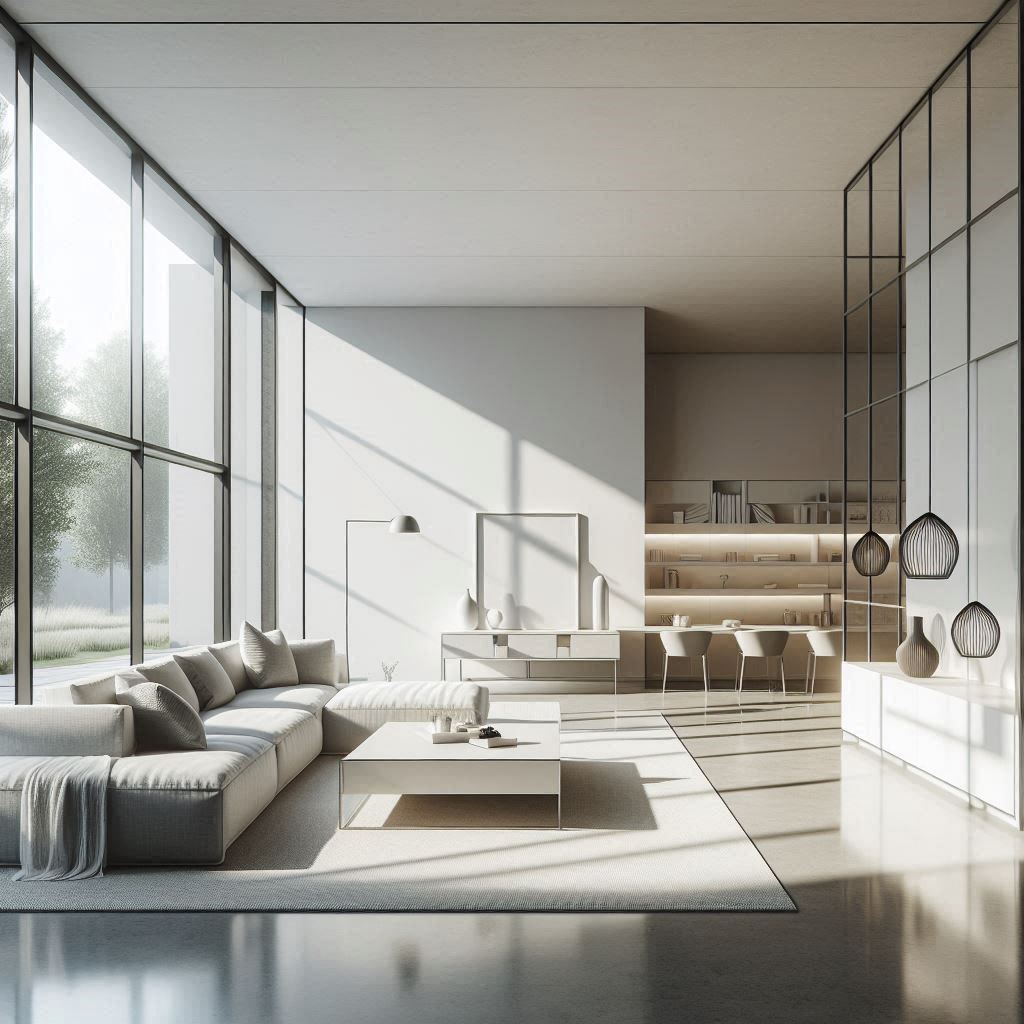 Balance and harmony are at the heart of minimalist home design. By carefully considering the placement of furniture, decor, and lighting, minimalist homes achieve a sense of order and flow that feels both relaxing and welcoming. The layout is often open and flexible, allowing for easy movement between different areas of the home. In addition to the physical arrangement of objects, minimalist design also considers the relationship between indoor and outdoor spaces. By using natural materials and large windows, minimalist homes create a seamless connection between the interior and the natural environment, further enhancing the sense of calm and harmony.
Balance and harmony are at the heart of minimalist home design. By carefully considering the placement of furniture, decor, and lighting, minimalist homes achieve a sense of order and flow that feels both relaxing and welcoming. The layout is often open and flexible, allowing for easy movement between different areas of the home. In addition to the physical arrangement of objects, minimalist design also considers the relationship between indoor and outdoor spaces. By using natural materials and large windows, minimalist homes create a seamless connection between the interior and the natural environment, further enhancing the sense of calm and harmony.
Exploring Minimalist Home Design Ideas
Decluttering for a Minimalist Look
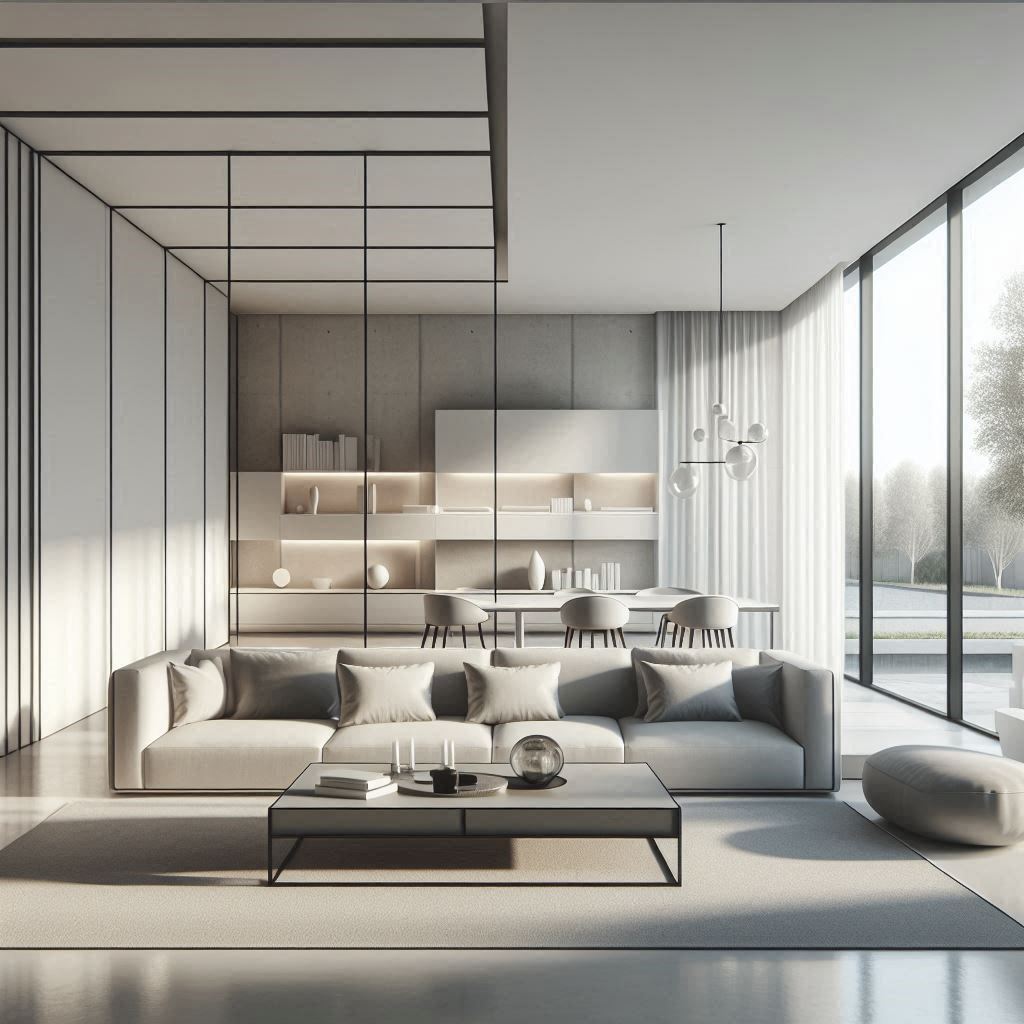 Decluttering is a fundamental step in achieving a minimalist home design. The process involves removing unnecessary items and keeping only those that serve a purpose or bring joy. In a minimalist home, less is more, and every object should have a clear function or aesthetic value. By decluttering, you create more space, allowing the room to feel open and organized. Storage solutions, such as built-in cabinets, floating shelves, and hidden compartments, help keep clutter out of sight, maintaining the clean and uncluttered look that is essential to minimalist design.
Decluttering is a fundamental step in achieving a minimalist home design. The process involves removing unnecessary items and keeping only those that serve a purpose or bring joy. In a minimalist home, less is more, and every object should have a clear function or aesthetic value. By decluttering, you create more space, allowing the room to feel open and organized. Storage solutions, such as built-in cabinets, floating shelves, and hidden compartments, help keep clutter out of sight, maintaining the clean and uncluttered look that is essential to minimalist design.
Minimalist Kitchens: Functionality Meets Simplicity
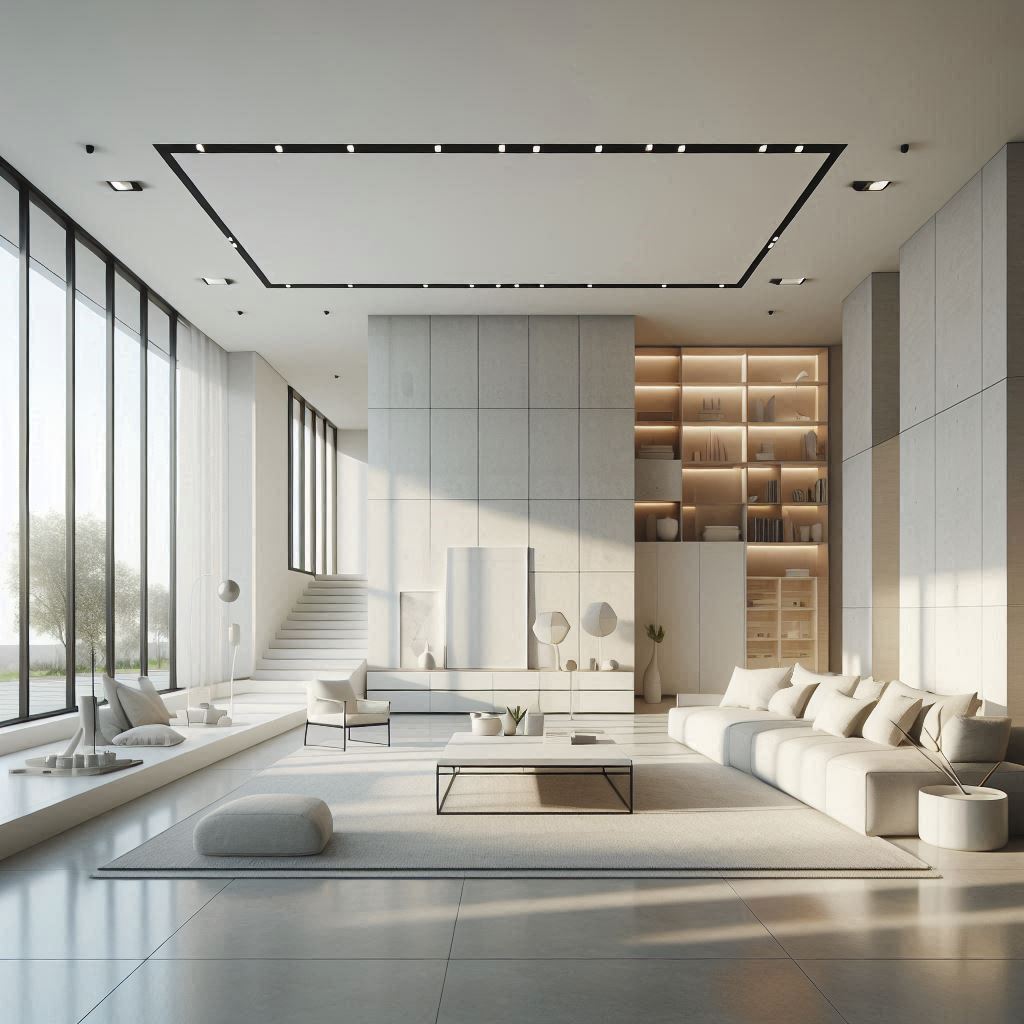 Minimalist kitchens are all about functionality and clean lines. The design typically features sleek cabinets, often with handle-less doors, and countertops free of unnecessary appliances or decor. Open shelving can be used to display a few carefully chosen items, while hidden storage keeps the rest of the kitchen essentials out of sight. The use of natural materials, such as stone or wood, adds warmth and texture to the space without overwhelming it. In minimalist kitchens, every detail is carefully considered to ensure that the space remains functional, uncluttered, and visually appealing.
Minimalist kitchens are all about functionality and clean lines. The design typically features sleek cabinets, often with handle-less doors, and countertops free of unnecessary appliances or decor. Open shelving can be used to display a few carefully chosen items, while hidden storage keeps the rest of the kitchen essentials out of sight. The use of natural materials, such as stone or wood, adds warmth and texture to the space without overwhelming it. In minimalist kitchens, every detail is carefully considered to ensure that the space remains functional, uncluttered, and visually appealing.
Minimalist Living Rooms: Open, Airy, and Inviting
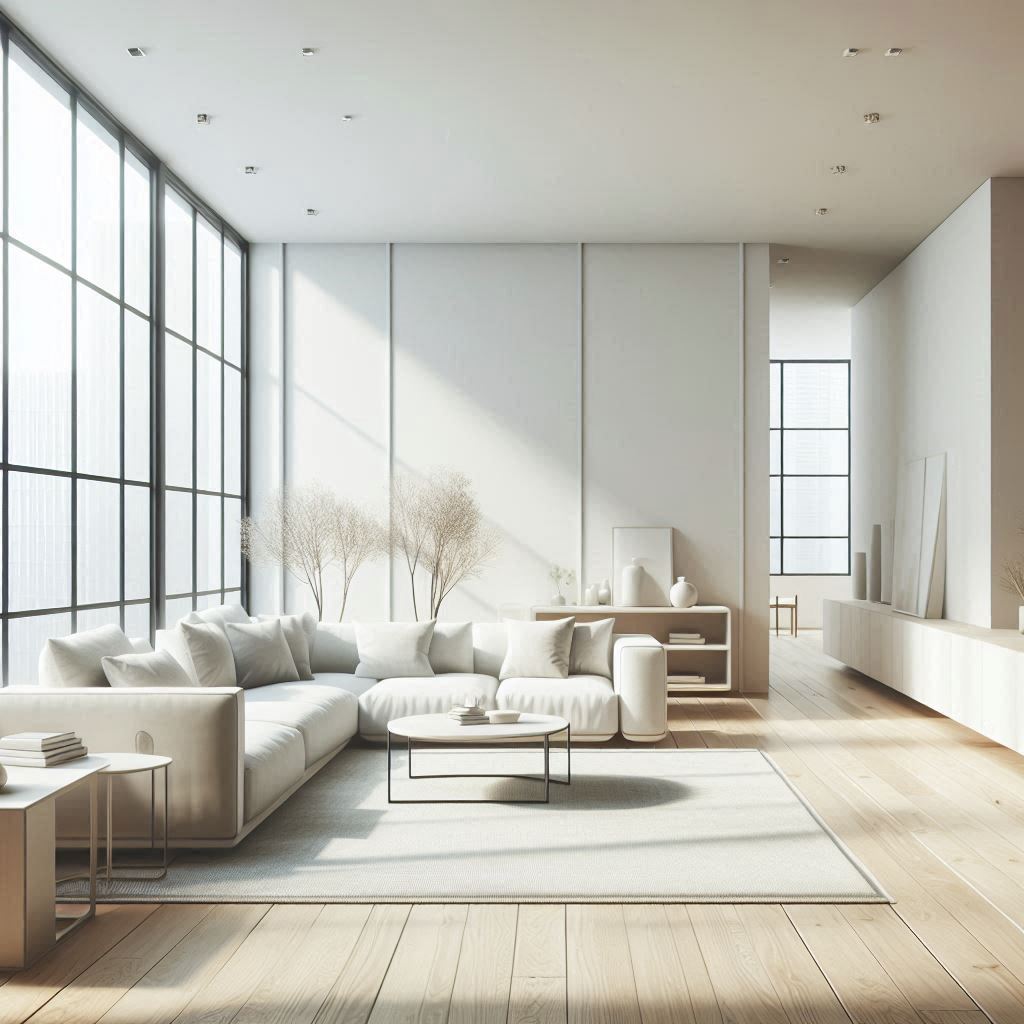 In minimalist living rooms, the focus is on creating a space that feels open, airy, and comfortable. Furniture is kept to a minimum, with a few key pieces chosen for their functionality and aesthetic appeal. Neutral colors, such as white, gray, and beige, dominate the color palette, while natural light is maximized through large windows or sliding glass doors. Minimalist living rooms often feature built-in storage solutions to keep clutter out of sight, while simple, elegant decor adds a touch of personality without overwhelming the space. The goal is to create a serene and inviting atmosphere that encourages relaxation.
In minimalist living rooms, the focus is on creating a space that feels open, airy, and comfortable. Furniture is kept to a minimum, with a few key pieces chosen for their functionality and aesthetic appeal. Neutral colors, such as white, gray, and beige, dominate the color palette, while natural light is maximized through large windows or sliding glass doors. Minimalist living rooms often feature built-in storage solutions to keep clutter out of sight, while simple, elegant decor adds a touch of personality without overwhelming the space. The goal is to create a serene and inviting atmosphere that encourages relaxation.
Minimalist Bedrooms: Serenity and Comfort
The minimalist approach to bedroom design is all about creating a calm and restful environment. The color palette is typically neutral, with soft whites, grays, and beiges creating a serene backdrop. Furniture is kept simple and functional, with a focus on quality materials and craftsmanship. Beds are often low to the ground, and storage solutions are integrated into the design to keep the space clutter-free. Minimalist bedrooms are designed to promote relaxation and restful sleep, with natural materials, soft lighting, and a lack of distractions contributing to the overall sense of tranquility.
Minimalist Bathrooms: Clean Lines and Natural Materials
Minimalist bathrooms are characterized by clean lines, simple fixtures, and the use of natural materials. The design often features sleek vanities with integrated storage, frameless glass shower enclosures, and large mirrors to enhance the sense of space. Neutral colors, such as white, gray, and beige, are commonly used, with natural stone or wood accents adding warmth and texture. In minimalist bathrooms, every element is chosen for its functionality and aesthetic appeal, creating a clean and uncluttered space that feels both modern and timeless.
Minimalist Outdoor Spaces: Connecting with Nature
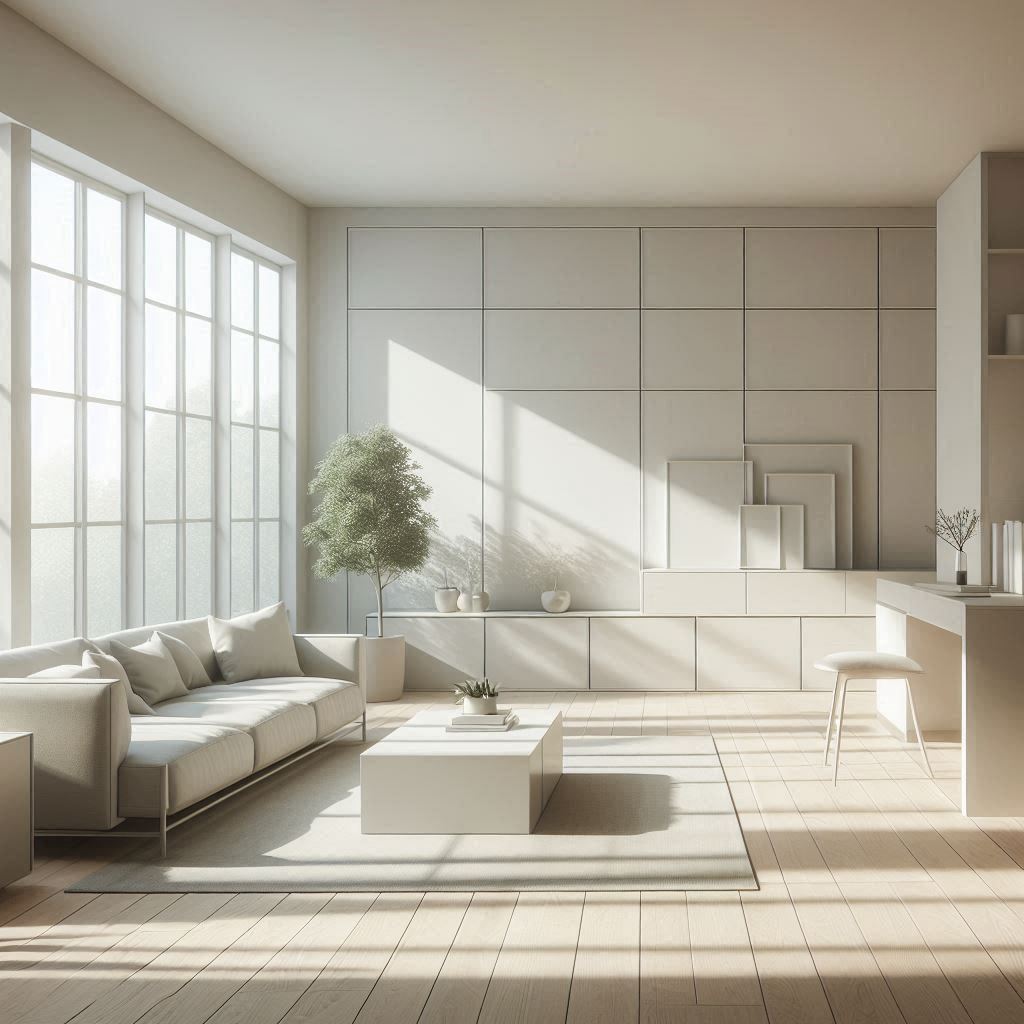 Minimalist home design extends beyond the interior, with outdoor spaces designed to complement the simplicity and elegance of the home. Minimalist outdoor spaces often feature clean lines, natural materials, and a focus on functionality. Simple, modern furniture, such as teak or metal seating, is paired with low-maintenance landscaping to create a serene and inviting environment. Water features, such as reflecting pools or simple fountains, can add a calming element to the space, while outdoor lighting enhances the ambiance in the evening. The goal is to create a seamless connection between the indoor and outdoor spaces, fostering a sense of harmony with nature.
Minimalist home design extends beyond the interior, with outdoor spaces designed to complement the simplicity and elegance of the home. Minimalist outdoor spaces often feature clean lines, natural materials, and a focus on functionality. Simple, modern furniture, such as teak or metal seating, is paired with low-maintenance landscaping to create a serene and inviting environment. Water features, such as reflecting pools or simple fountains, can add a calming element to the space, while outdoor lighting enhances the ambiance in the evening. The goal is to create a seamless connection between the indoor and outdoor spaces, fostering a sense of harmony with nature.
Minimalist Home Offices: Productivity and Simplicity
With more people working from home, minimalist home offices have become increasingly popular. The minimalist approach to office design focuses on creating a clean, organized, and distraction-free workspace. Neutral colors and natural materials help to create a calm environment, while functional furniture, such as a sleek desk and ergonomic chair, ensures comfort and productivity. Storage solutions, such as built-in shelves or filing cabinets, keep the space organized and clutter-free. A minimalist home office is designed to enhance focus and efficiency, allowing you to work in a space that feels both inspiring and functional.
The Advantages of Minimalist Home Design
A Calming and Clutter-Free Environment
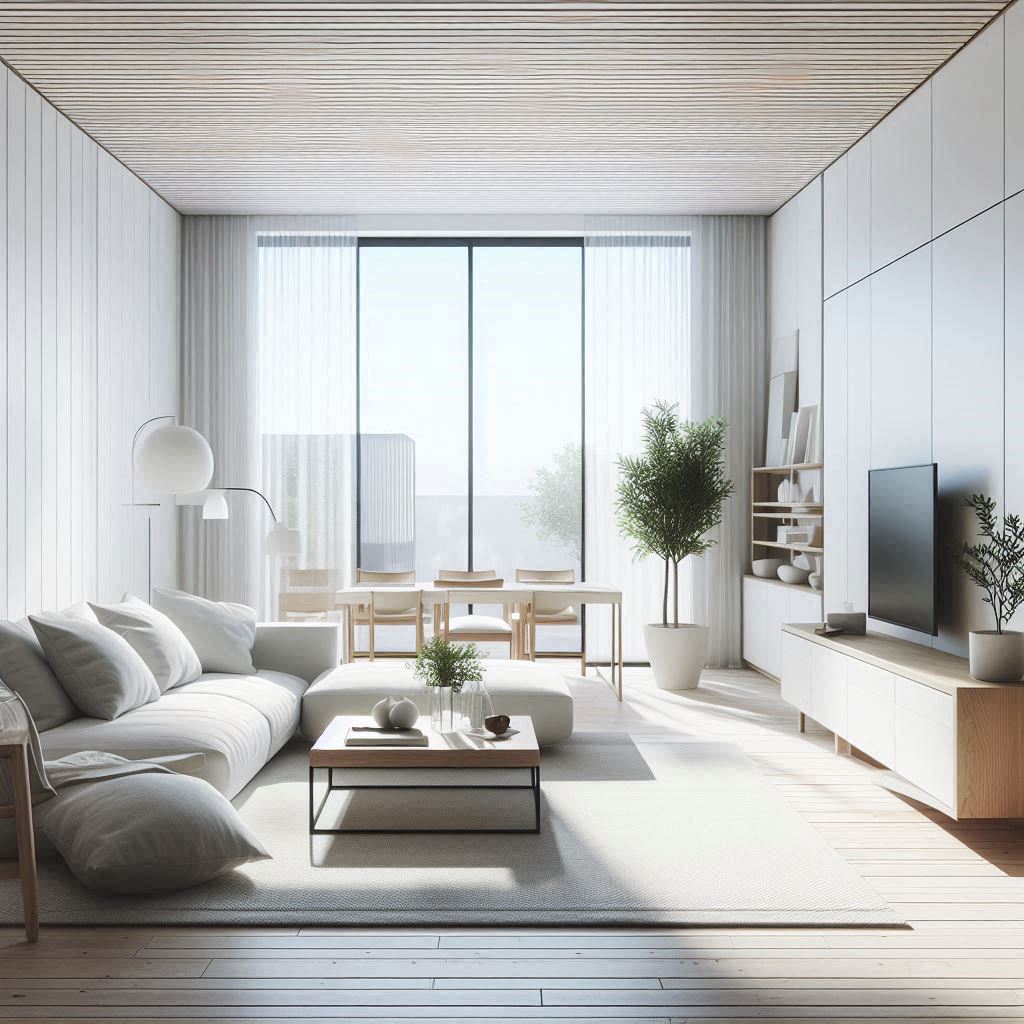 One of the most significant advantages of minimalist home design is the creation of a calming and clutter-free environment. By removing unnecessary items and focusing on simplicity, minimalist homes promote a sense of order and tranquility. This can have a positive impact on mental well-being, as cluttered spaces are often associated with stress and anxiety. A minimalist home encourages mindfulness, allowing you to focus on the things that truly matter and enjoy a more peaceful and serene living environment.
One of the most significant advantages of minimalist home design is the creation of a calming and clutter-free environment. By removing unnecessary items and focusing on simplicity, minimalist homes promote a sense of order and tranquility. This can have a positive impact on mental well-being, as cluttered spaces are often associated with stress and anxiety. A minimalist home encourages mindfulness, allowing you to focus on the things that truly matter and enjoy a more peaceful and serene living environment.
Timeless Appeal
Minimalist home design has a timeless appeal that transcends trends and fads. The focus on clean lines, neutral colors, and quality materials ensures that minimalist spaces remain stylish and relevant for years to come. Unlike more ornate or trendy design styles, which can quickly feel dated, minimalist design is built on principles of simplicity and functionality that never go out of style. This makes it a smart investment for homeowners who want a space that will look fresh and modern for years to come.
Enhanced Functionality
Another key advantage of minimalist home design is the enhanced functionality it offers. In minimalist homes, every piece of furniture and decor serves a purpose, and spaces are designed to maximize efficiency. This is particularly beneficial in smaller homes, where space is limited, but even in larger homes, minimalist design ensures that each room is used to its full potential. By focusing on functionality, minimalist homes provide a practical and efficient living environment that makes daily tasks easier and more enjoyable.
Easy to Maintain
Minimalist homes are generally easier to maintain than more elaborate or ornate spaces. With fewer items to clean and less clutter to organize, maintaining a minimalist home requires less time and effort. This can be particularly appealing for busy professionals or families who want a clean and organized space without spending hours on housekeeping. Additionally, the use of high-quality, durable materials in minimalist design ensures that the home remains in good condition for longer, reducing the need for frequent repairs or updates.
Encourages Mindful Living
Minimalist home design encourages a more mindful way of living. By focusing on simplicity and intentionality, minimalist homes help you prioritize the things that are truly important. Whether it’s spending time with family, pursuing hobbies, or simply enjoying a quiet moment of reflection, a minimalist home provides a space that supports these activities. By eliminating distractions and unnecessary clutter, minimalist design allows you to live more intentionally and enjoy a greater sense of peace and fulfillment in your daily life.
Greater Flexibility
Minimalist home design offers greater flexibility in terms of layout and decor. Because minimalist spaces are often open and uncluttered, it is easy to reconfigure the layout or change the decor as your needs or preferences evolve. This flexibility is particularly valuable in homes with growing families or changing lifestyles, as it allows you to adapt the space to suit your needs without requiring extensive renovations. Additionally, minimalist design makes it easy to incorporate new furniture or decor, as the neutral backdrop provides a versatile canvas for any style or color palette.
Connection to Nature
Minimalist home design often emphasizes a strong connection to nature. Through the use of natural materials, large windows, and open spaces, minimalist homes create a sense of harmony with the natural environment. This connection to nature can enhance the overall well-being of the home’s occupants, as natural light and materials like wood and stone have been shown to reduce stress and promote relaxation. Additionally, minimalist outdoor spaces provide an opportunity to enjoy the beauty of the natural world in a serene and uncluttered setting.
Frequently Asked Questions (FAQs)
What is minimalist home design?
Minimalist home design is a style that emphasizes simplicity, functionality, and intentionality. It focuses on clean lines, neutral colors, and clutter-free spaces to create a calm and serene living environment.
How do I achieve a minimalist look in my home?
To achieve a minimalist look, start by decluttering your space and keeping only the items that serve a purpose or bring joy. Choose furniture with clean lines, stick to a neutral color palette, and incorporate natural materials for warmth and texture.
Is minimalist home design expensive?
Minimalist home design can be affordable or expensive, depending on the materials and furniture you choose. The key is to invest in quality pieces that are timeless and functional, which can save money in the long run by reducing the need for frequent updates or replacements.
Can minimalist home design work in small spaces?
Yes, minimalist home design is particularly well-suited to small spaces, as it emphasizes functionality and maximizes the use of available space. By decluttering and choosing multi-functional furniture, you can create a minimalist home that feels open and spacious, even in a small area.
What are the key colors used in minimalist home design?
Minimalist home design typically features a neutral color palette, with shades of white, gray, beige, and black being the most common. Soft pastels and natural tones, such as wood or stone, can also be incorporated to add warmth and texture.
Can I incorporate bold colors in minimalist design?
While minimalist design typically favors neutral colors, bold colors can be used sparingly as accents to add contrast or highlight specific areas of the home. The key is to use bold colors thoughtfully and in moderation to maintain the clean and uncluttered aesthetic of minimalist design.
How can I incorporate storage into minimalist design?
Storage is essential in minimalist home design to keep clutter out of sight. Built-in cabinets, floating shelves, and hidden compartments are common storage solutions in minimalist homes. The goal is to maintain a clean and organized space without sacrificing functionality.
Is minimalist home design suitable for families?
Yes, minimalist home design can be suitable for families, especially when it includes functional storage solutions and durable, high-quality materials. The clean and uncluttered environment can promote a sense of calm and order, making it a practical choice for family homes.
What materials are commonly used in minimalist design?
Natural materials, such as wood, stone, and metal, are commonly used in minimalist home design. These materials add warmth and texture to the space while maintaining the clean and simple aesthetic of minimalist design.
How can I make a minimalist home feel cozy?
To make a minimalist home feel cozy, incorporate soft textiles, such as throw blankets, rugs, and cushions. Natural materials, warm lighting, and a few carefully chosen decor items can also add warmth and personality to a minimalist space.
What are the benefits of minimalist home design?
The benefits of minimalist home design include a clutter-free environment, enhanced functionality, easy maintenance, timeless appeal, and a greater connection to nature. Minimalist homes promote a sense of calm and order, making them ideal for modern living.
Can minimalist design be personalized?
Yes, minimalist design can be personalized through the use of artwork, decor, and furniture that reflects your style and preferences. The key is to choose pieces that are intentional and thoughtful, ensuring that they contribute to the overall simplicity and balance of the space.
How does minimalist design affect mental well-being?
Minimalist home design can positively impact mental well-being by reducing visual clutter and creating a calm, organized environment. This can help to reduce stress and anxiety, allowing you to focus on the things that truly matter and enjoy a more peaceful living space.
Conclusion: Discover the Power of Minimalist Home Design
Why Minimalist Design is Perfect for Modern Living
Minimalist home design offers a powerful solution for modern living, providing spaces that are both functional and beautiful. By focusing on simplicity and intentionality, minimalist design helps to create an environment that promotes calm, clarity, and mindfulness. Whether you’re looking to reduce clutter, maximize space, or simply create a more serene living environment, minimalist design offers endless possibilities. With its timeless appeal, minimalist design is a smart investment that will continue to bring value and joy to your home for years to come.
Take the First Step Towards a Minimalist Home
If you’ve been considering a minimalist approach to your home design, now is the perfect time to take action. Minimalist design is not only aesthetically pleasing but also highly functional, making it an ideal choice for those looking to create a more organized and efficient living space. Whether you’re starting from scratch or looking to simplify your current home, minimalist design can help you achieve your goals. As professional home designers, we’re here to guide you every step of the way, offering expert advice and innovative solutions to help you create the minimalist home of your dreams.
Start Your Minimalist Home Design Journey Today
Are you ready to transform your home with minimalist design? We’re here to help you get started. Our team of experienced designers specializes in creating beautiful, functional spaces that align with the principles of minimalism. From decluttering and space planning to selecting furniture and decor, we’ll work with you to create a home that reflects your personal style while enhancing the overall flow and comfort of your space. Contact us today to schedule a consultation and start your minimalist home design journey.
Experience the Benefits of Minimalist Living
Minimalist living offers a wide range of benefits, from reduced stress and clutter to enhanced functionality and flexibility. By embracing minimalist design principles, you can create a home that supports your lifestyle and allows you to focus on the things that matter most. Whether you’re drawn to the clean lines and neutral color palette of minimalism or simply looking for ways to simplify your life, minimalist home design offers a path to a more intentional and fulfilling way of living. Let us help you experience the benefits of minimalist living today.
Transform Your Home with Professional Minimalist Design Services
At our design firm, we specialize in creating minimalist homes that are both beautiful and functional. Our team of expert designers will work with you to develop a custom design plan that meets your unique needs and preferences. Whether you’re looking to redesign a single room or your entire home, we’ll help you create a space that feels open, serene, and perfectly suited to your lifestyle. Contact us today to learn more about our minimalist design services and how we can help you transform your home.
Your Dream Minimalist Home is Within Reach
Don’t wait any longer to create the minimalist home you’ve been dreaming of. With the right design approach, you can transform your living space into a haven of simplicity and elegance. Whether you’re looking to declutter, maximize space, or simply create a more peaceful environment, minimalist design offers a solution that is both practical and aesthetically pleasing. Contact us today to schedule a consultation and take the first step toward your dream minimalist home.
Get Started on Your Minimalist Home Design Project Today
Ready to take the plunge into minimalist home design? We’re here to help. With our expertise and passion for minimalist design, we’ll guide you through every step of the process, from initial concept development to final execution. Whether you’re updating your current home or building a new one, our team will work with you to create a space that is both beautiful and functional. Contact us today to get started on your minimalist home design project and begin the journey toward a simpler, more intentional way of living.
 Home Designing Get expert home decor tips and design inspiration at HomeDesigning.blog. Transform your living spaces with trending styles and DIY ideas!
Home Designing Get expert home decor tips and design inspiration at HomeDesigning.blog. Transform your living spaces with trending styles and DIY ideas!
